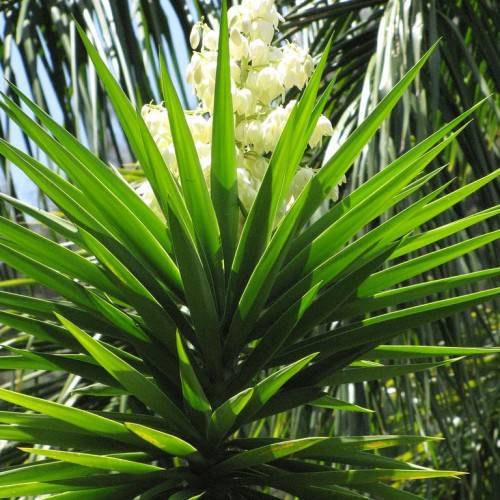
Spineless yucca
Yucca elephantipes
Cycle:
Perennial
Watering:
Average
Hardiness Zone:
9 - 10
Flowers:
Flowers
Sun:
full sun,part shade
Leaf:
Yes
Growth Rate:
Low
Maintenance:
Low
Drought Tolerant:
Yes
Salt Tolerant:
Yes
Thorny:
Yes
Tropical:
Yes
Indoors:
Yes
Care Level:
Medium
watering
For Spineless yucca plants, water once every 1-2 weeks, allowing the soil to dry out in between waterings. During the growing season (spring and summer), the plant should receive deep but infrequent watering while during the winter months, allow the soil to become almost dry between waterings.
sunlight
Spineless yucca (Yucca elephantipes) requires at least 4 to 6 hours of direct sunlight daily. As this species is native to desert areas, it prefers to be in full sun most of the day, while saplings will need more shade to reduce the risk of sunburn. It is also better to give it a few hours of bright indirect sunlight than too much direct sunlight. Additionally, it is best to place the plant in a south-facing window, if possible. If the species is kept indoors, try to place it close to an east- or west-facing window.
pruning
Pruning for Spineless Yucca plants should be done in the spring, from February to April. It is best to prune when the plant is actively growing, as this will encourage new growth and reduce stress on the Yucca plant. As for how much to prune, remove new sprouts that you do not want to develop into a branch and prune no more than 1-third of the branches at a time. This will help preserve the overall health and shape of the Yucca plant.
